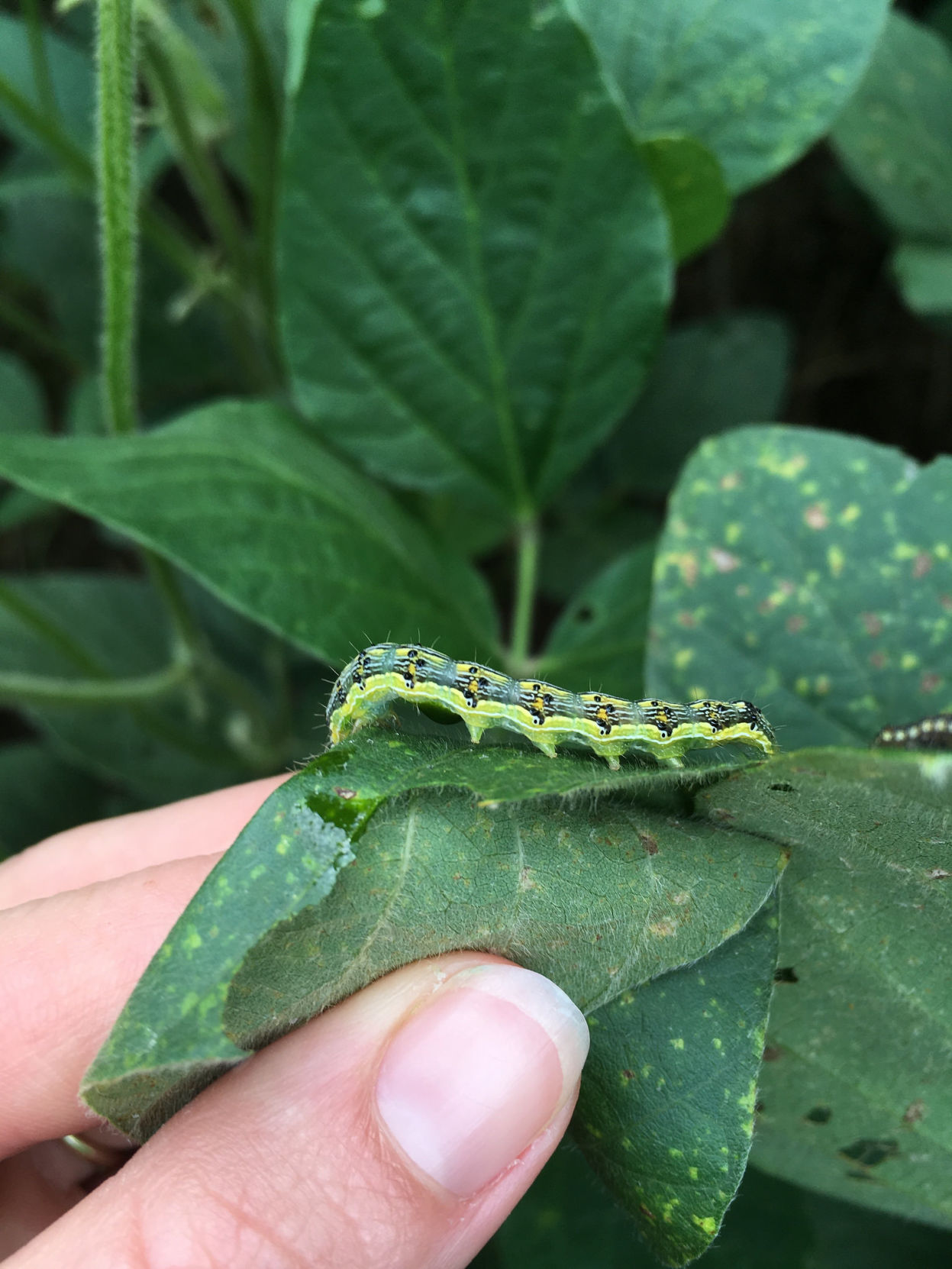Jill Scheidt, agronomy specialist with University of Missouri Extension, scouted fields east of Lamar, south of Golden City and near Arcola on Sept 5.
Two damaging caterpillars—fall armyworm in fescue pastures and podworm in soybean fields—have been spotted and producers should be scouting their own fields as a result.
Soybean field
Soybeans that Scheidt scouted ranged from beginning to full seed. Sudden Death Syndrome is showing up in most fields.
"Identify Sudden Death Syndrome, or SDS, by yellowing between the leaf veins, followed by necrosis of the leaf, while veins remain green. SDS fungus is in the roots, so foliar fungicides will not help; instead choose a resistant variety and utilize crop rotation," said Scheidt.
Cool, wet conditions early in the growing season encourage development; symptoms do not show up until midsummer, usually following cooler temperatures or high rainfall during bloom or pod fill.
Scheidt observed podworms at threshold level in second crop and late planted soybeans.
"Differentiate podworms from other caterpillars by counting four prolegs in the middle of the body. Identification is important because most other caterpillars are foliage feeders," said Scheidt.
Threshold level is one per foot of row or five percent pod damage.
Corn fields
Aflatoxin is being reported in some area corn.
"It is a toxin produced by aspergillus ear rot. Development of aflatoxin is encouraged during drought and high humidity conditions. Harvest dryland separate from irrigated fields, adjust the combine to spit out broken and lightweight kernels and clean the combine," said Scheidt.
Maximum acceptable level for aflatoxins in human food, dairy and immature animals and unknown animal feed source is 20 parts per billion. Breeding beef cattle, swine and poultry maximum aflatoxin level is 100 ppb; finishing swine is 200 ppb and finishing beef cattle is 300 ppb.
Lower aflatoxin levels by mechanical separation of moldy and lightweight kernels, blending and alternative feeding.
Fescue pasture
Scheidt observed fall armyworm at threshold level in fescue fields.
"Scout grass pastures frequently as a lot of foliage damage can occur overnight," said Scheidt.
Fall armyworm range from 1/16" to 1 1/2" long. They start out light green and turn dark with light colored lines running lengthwise.
"Outbreaks are more likely after periods of drought," said Scheidt. "Threshold is four armyworms per square foot."
Barton County MU Extension sponsors the field scouting report. For more information, contact the Barton County Extension Center at 417-682-3579.



